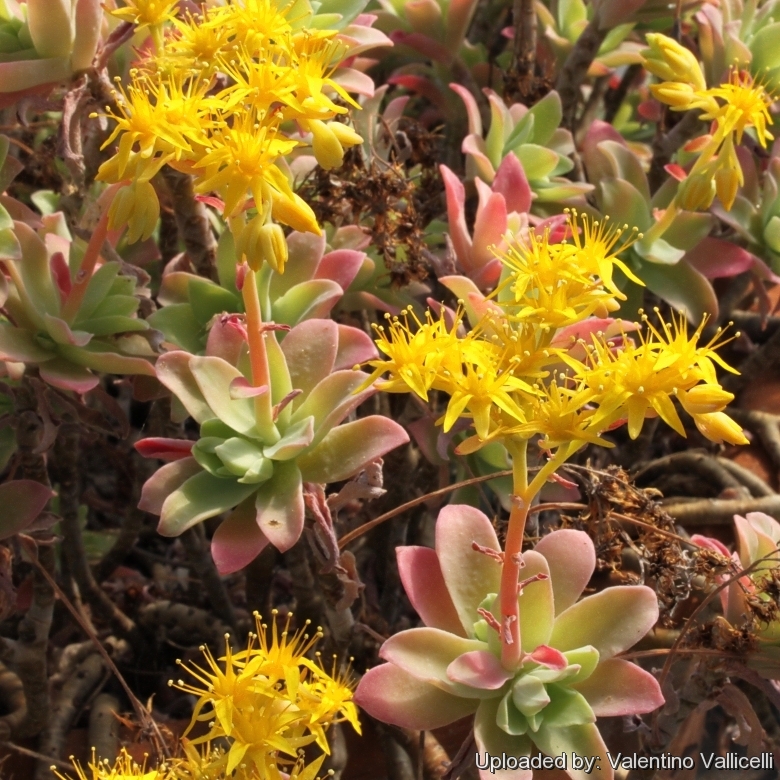
Sedum palmeri Photo by: Valentino Vallicelli
Origin and Habitat: Mexico, Coahuila, Nuevo Leon (Sierra Madre above Monterrey, ) naturalized in Italy.
Habitat: Forms carpets on rocky outcrop in the canyons and northeastern slopes of the Sierra Madre above Monterrey, at around 1000 m altitude.
Synonyms:
See all synonyms of Sedum palmeri
back
Accepted name in llifle Database:Sedum palmeri S.WatsonProc. Amer. Acad. Arts 17: 355 355 1882Synonymy: 3
back
Common Names include:
ENGLISH: Palmer's Sedum, Mexican Hens and Chickens, Stonecrop, Palmer's Stonecrop
SPANISH (Español): Sedum
Description: Sedum palmeri is a cool-greenhouse plants that produces sprays of large yellow-orange blooms that almost conceal the foliage. It is widely cultivated northern Italy, where balconies are often lined with this plant. In spring, when you look up at residential buildings, you can see row after row of bright yellow flowers of Sedum palmeriSN|22452]]SN|22452]]. It is probably related to Sedum obcordatum.
Habit: It is a small, caulescent, richly branched perennial semi-shrub with erect or reclining branches, which have at their tips small rosettes of leaves. It forms a dense mound of foliage. When not in flowers it looks like a small Echeveria.
Rosettes: Flattish, fleshy, relatively large about 5cm across.
Stems: Flexuous, glabrous, that arch a little and are 15-25(-30) cm long.
Leaves: 10-30 mm long, alternate, borne spirally on the stems in rosettes at the ends of the branches, flat, thick, spatulate-obovate, stalkless (or pseudopetiolate-obovate in the lower pan), rounded at the summit and slightly apiculate, dusty glaucous green with a pale pink blush and waxy. Ofen older leaves have red edges.
Flowering branches: Erect.
Inforesence: Panicles or lax corymbs.
Flowers: Relatively large, point-tipped, starry 5- to 7-merous, petals 4-6 mm long orange-yellow; Sepals broadly sessile, unequal, oblong, subacute; pedicels short; Style rather long.
Blooming season: It comes into full flower in mid-February through April.
Cultivation and Propagation: These plants like filtered light and can tolerate full shadow. This species prefers dry conditions and it is best to refrain from watering it until the rootball has dried out completely. The plant can then be immersed in water and well drained and left until it has completely dried out again. Its succulent leaves will store enough water to survive for long time.
Uses: They can form a carpet that drapes over stones or walls outdoors on rock crevices with favourable water regime, eastern slopes alpine house, poor, drained soil, shading in summer. It is also a perfect choice for a large planter, from which its pendant branchlets can be allowed to hang down.
Propagation: This is a tough plant which spreads aggressively, division of old plant can be made in spring and late summer; cuttings in summer.










